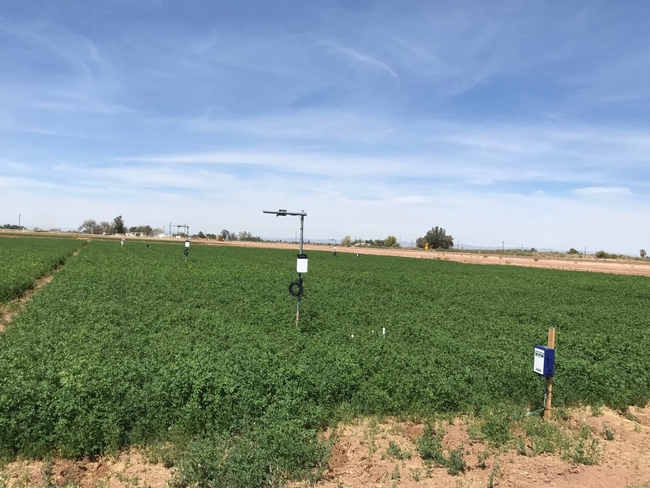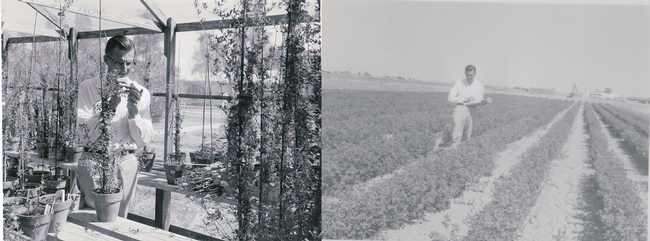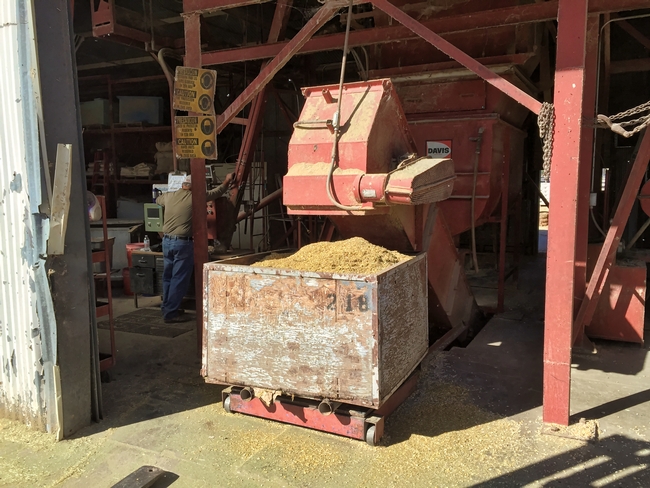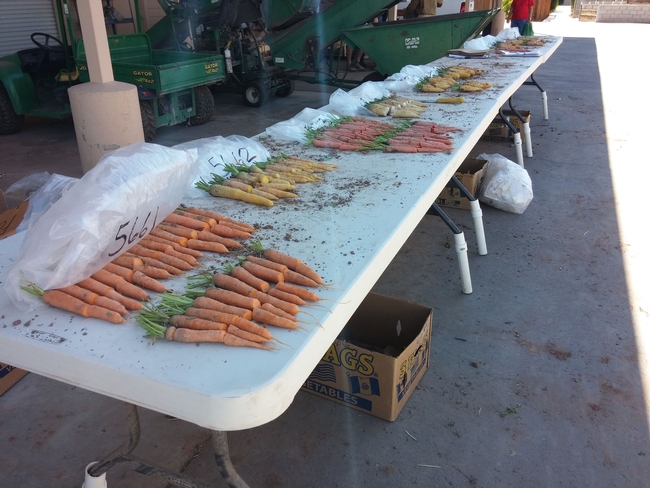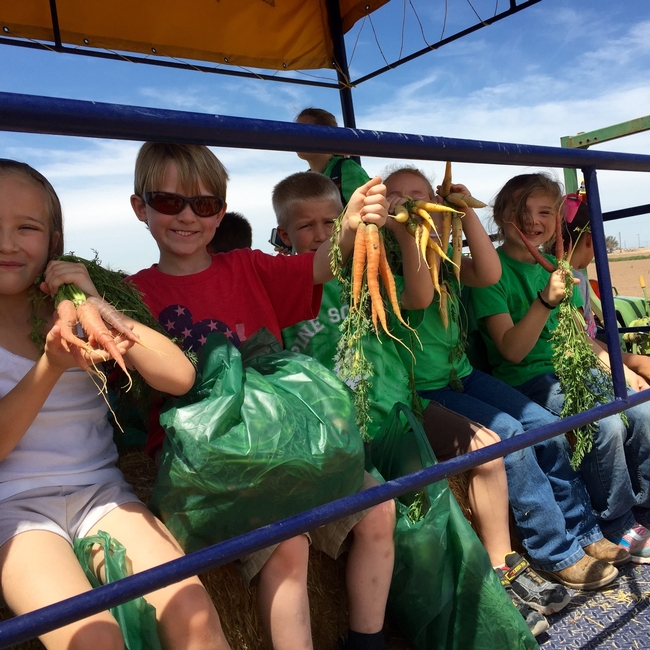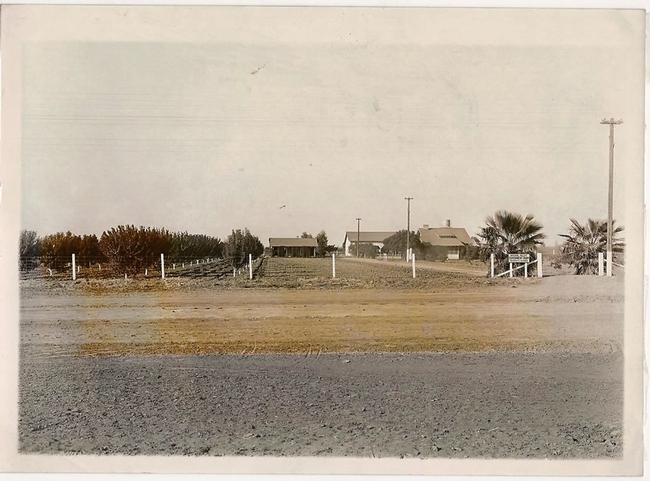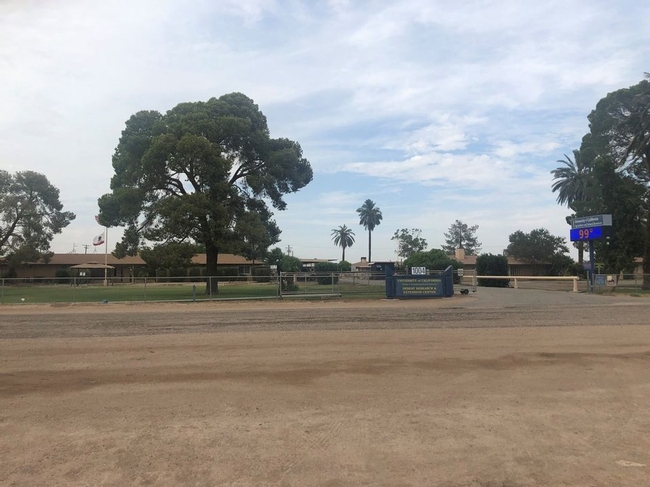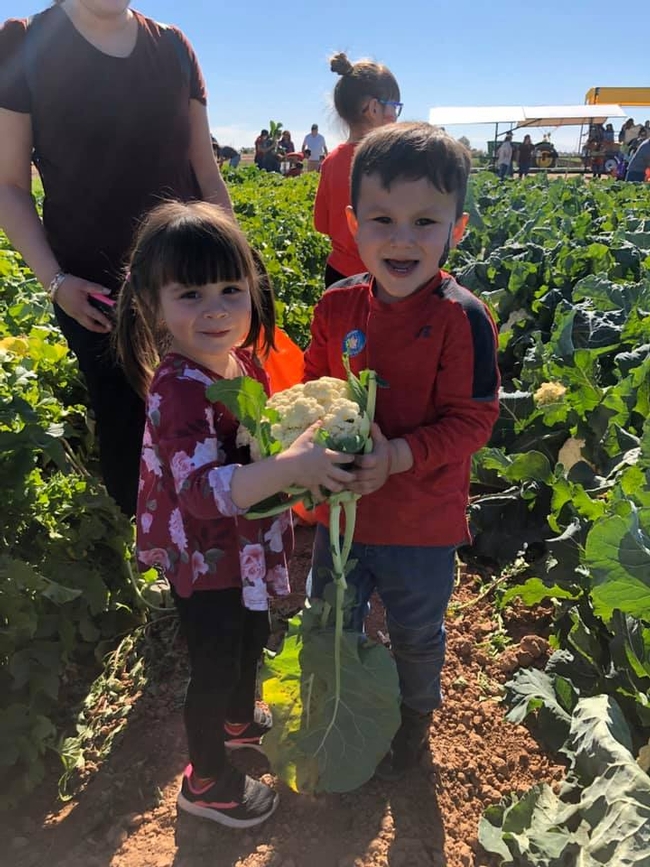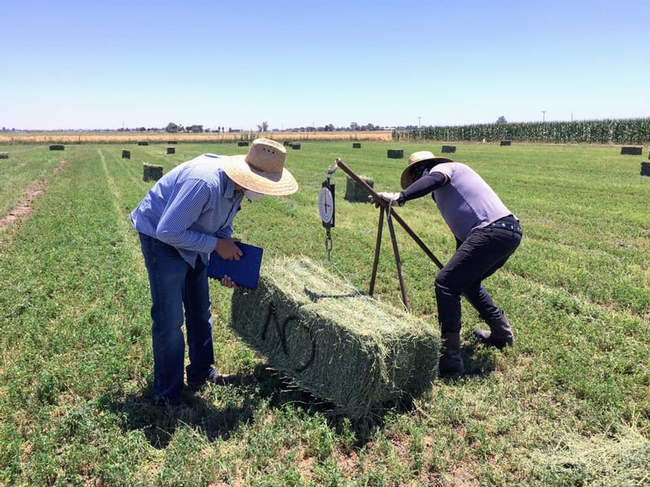- Author: Stacey AMPARANO
Water has always been a precious commodity in Imperial County. With rainfall averaging less than 3 inches per year, this arid desert region depends on irrigation water from the Colorado River to continue its production of over 100 different commodities on its deep, rich soil. While water flowed has freely since the early 1900's, water transfers and growing metropolitan cities have put increased pressures on Imperial County to conserve and meet the demands of the future. Imperial County is the top producer of Alfalfa in California, and it is one of the top commodities in Imperial County, with over 150,000 acres of alfalfa harvested annually and shipped across the world. Alfalfa has also been Imperial Valley's biggest user of water as well as IV's most valuable field crop, with a gross value of $218 million in 2018 according to the Imperial County Crop Report.

The scientific findings from UCDREC and UCCE will continue to play a critical role in forming successful solutions to Imperial Valleys emerging water issues related to agriculture and alfalfa.
For more information on DREC and its educational program, please contact our Center Director, Jairo Diaz at jdiazr@ucanr.edu or our Farm Smart Program Manager, Stacey Amparano, at scwills@ucanr.edu. You can also reach us at (760)356-3060
Further reading/viewing:
The Early History of Water in Imperial Valley: Video
Early History of Water in Imperial Valley- Presentation and Study Guide
- Author: Stacey AMPARANO
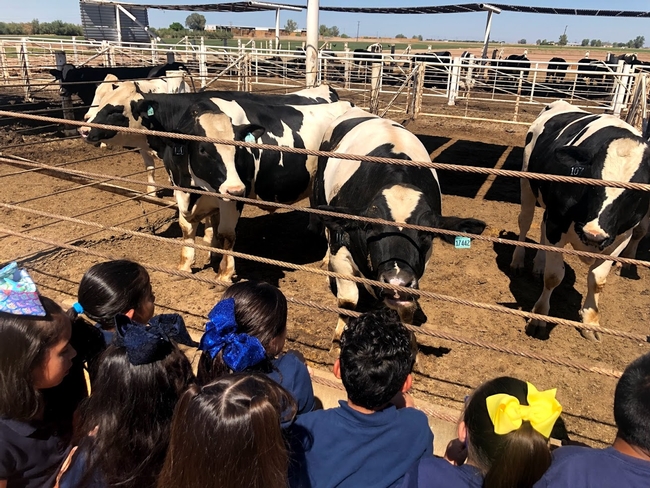
In his recent work, Dr. Zinn's research has investigated corn processing for feed in feedlots producing calf-fed Holstein steers at DREC, indicating feed values for corn increased by 18%, improving average daily gain and feed efficiency while decreasing the cost of feed to produce high quality beef. This methodology is widely used throughout feedlots in the Imperial County and desert southwest of the US.
Additionally, Dr. Zinn's analysis of sugarbeets as a partial replacement of up to 40% of corn in feed rations has demonstrated feed costs can be decreased by 15-40% when corn costs are high while maintaining animal productivity. While only used opportunistically depending on feed costs, this research allows for a reduction in feed costs while maintaining production.
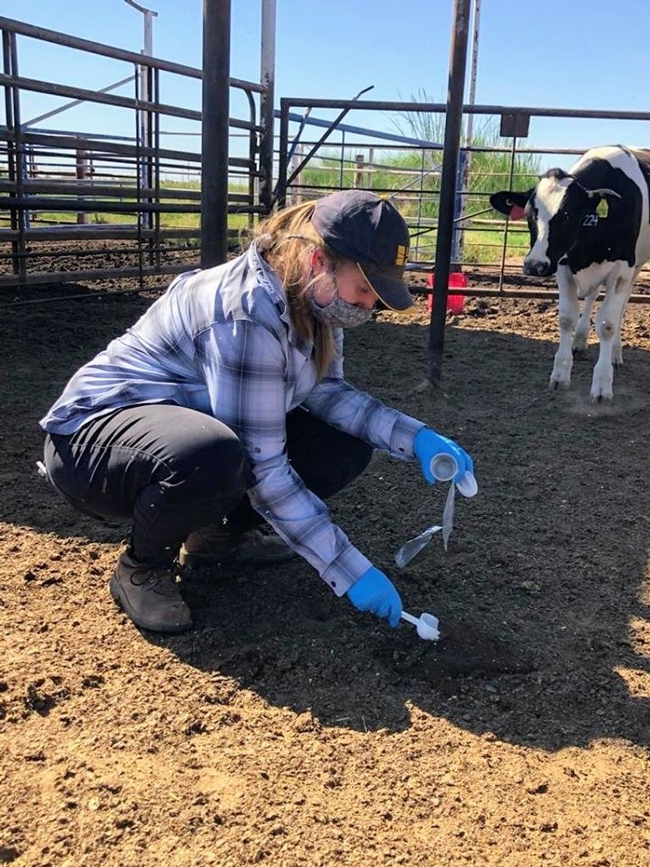
Joining the team in August 2020 as the Feedlot Management Specialist is Dr. Pedro Carvalho. Dr. Carvalho will report to UC Davis Animal Science Department. Having Latack and Carvalho in our Center will enhance our mission and continue a long and rich history of support to our local/regional/world cattle industry.
For more information on DREC and its educational program, please contact our Center Director, Jairo Diaz at jdiazr@ucanr.edu or our Farm Smart Program Manager, Stacey Amparano, at scwills@ucanr.edu. You can also reach us at (760)356-3060
- Author: Stacey AMPARANO
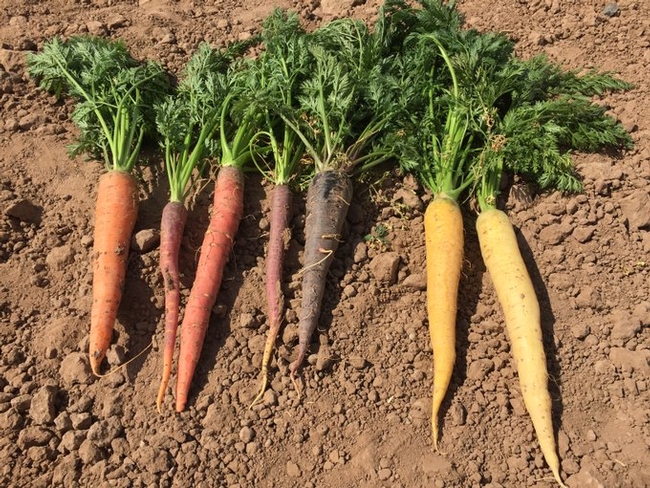
Due to its mild winter temperatures and access to water, Desert REC is the primary site for developing and testing USDA carrot breeding stock. The work of Dr. Phillip Simon, who holds a joint position with USDA's Agriculture Research Service (ARS) and the University of Wisconsin-Madison's Horticulture Department, has contributed to today's carrot providing 50% more vitamin A to US consumers than in 1990.
While the orange carrot is a standard in carrot varieties, it is actually a more recent carrotvarietal. The purple and yellow carrots were the original carrot colors and these novel colored carrots (ie purple, yellow, and red) are becoming increasingly popular among consumers and chefs again. Each color has a different health benefit and nutritional value. Dr. Simon's research includes the development of novel colored carrot strains with increased nutritional values, such as carotenoids and anthocyanins.
Dr. Simon has partnered with the UC DREC Farm Smart program to offer outreach and educational program focused on expanded awareness of carrots and carrot diversity. Starting in 2016, the Farm Smart outreach has included presentations to teachers and classrooms, taste testing of the novel colored carrots, curriculum and seed distribution to educators, and carrot harvesting and tours for youth and adult participants.
Click here to read more about the carrot outreach at Farm Smart
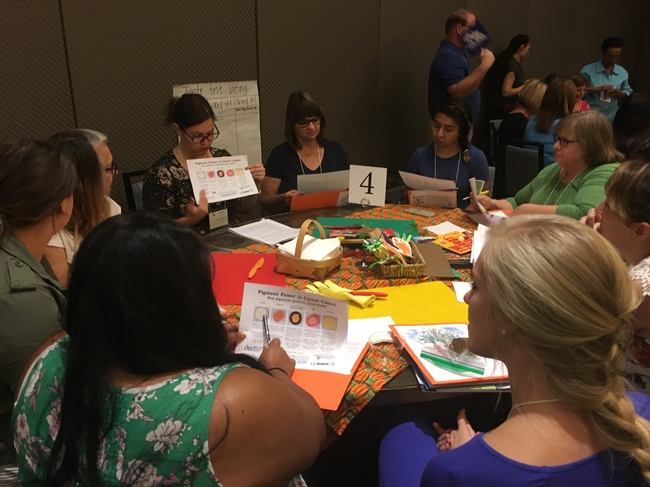
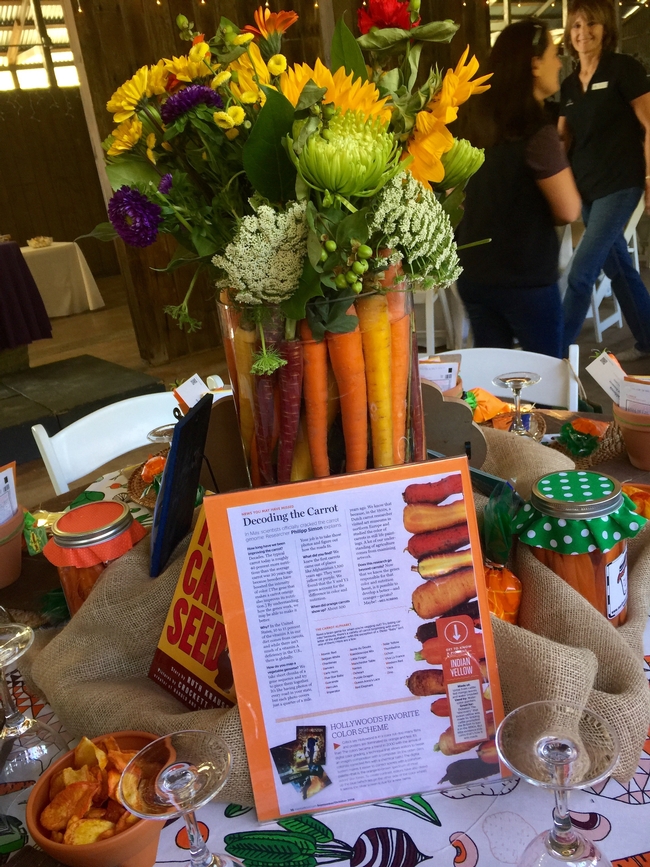
For more information on DREC and its educational program, please contact our Center Director, Jairo Diaz at jdiazr@ucanr.edu or our Farm Smart Program Manager, Stacey Amparano, at scwills@ucanr.edu. You can also reach us at (760)356-3060
For further reading:
DREC Carrot Trial Results Since 1998:
CalAg Journal: Desert REC: Educational outreach and crop breeding by Jim Downing
- Author: Stacey AMPARANO
The University of California Desert Research and Extension Center (UC DREC) was established in 1912 and is the oldest research and extension center in the UC system. For the past 108 years, UC DREC has conducted innovative and relevant agricultural, natural resources, and environmental research and extension in arid desert regions. DREC has gone by many names in its 108 years of Imperial Valley agriculture research. Some may remember the Imperial Valley Experiment Station (1912-1948), Imperial Valley Field Station (1948-1984), Imperial Valley Agriculture Center (1984-1990), and now, the Desert Research and Extension Center (1990-present). The longstanding unofficial title of DREC has been “The Meloland Field Station”, named after Meloland (formerly, Gleason Switch), the unincorporated community from 1908-1911 where DREC is currently located. There was a post office (which has since burned down) and a schoolhouse (which still stands as a personal residence across the street from UC DREC).
The need for agriculture research in California became recognized by the University of California in 1908. The Meloland Station was developed from a need for research on the unique climate and soil conditions of Imperial Valley that were, and still are, unique in American agriculture.
What started as 20 acres of land purchased by the Imperial County Board of Supervisor and 16 local, interested citizens (including Mr. W. E. Holt, founder of Holtville, and Mr. Harold Bell Wright, author of “The Winning of Barbara Worth”) has transformed into 255 acres, which includes 190 acres of research plots, classrooms where Farm Smart is housed, and the UC Cooperative Extension offices.
Over the past century of changes, UC DREC researchers have helped Imperial Valley farmers meet the many challenges of desert agriculture, including lack of water, extreme summer heat, and rampant pest insects that devour crops and spread diseases. The center's major contributions include (see table):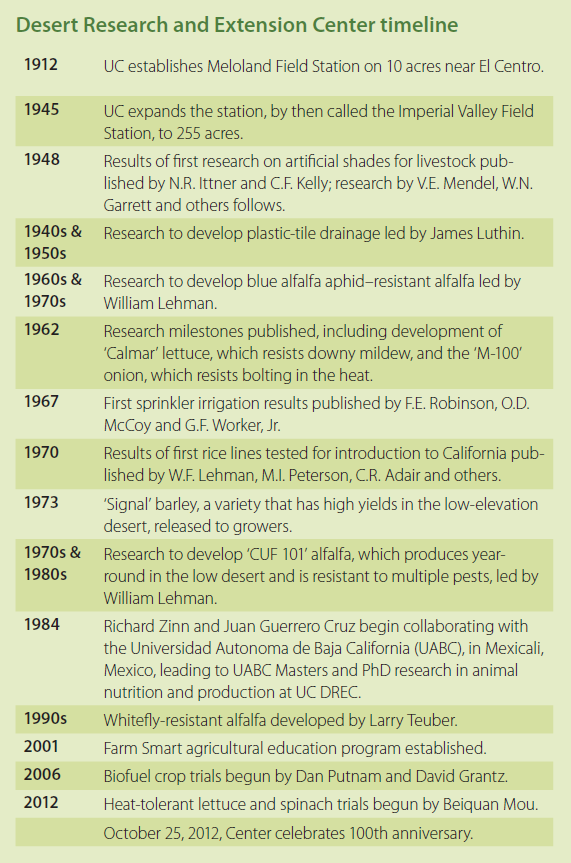
- Developing cattle feeds and shade structures to enhance feedlot production during the summer, when high temperatures hinder livestock weight gain
- Developing plastic-tile drainage systems to maintain soil productivity by flushing salt from the root zone
- Increasing yields and pest resistance of desert-grown crops, from alfalfa and wheat to melons and lettuce
- Testing thousands of rice lines from around the world for introduction to California
In addition, today's UC DREC researchers are helping farmers prepare for the future. This week we will be highlighting the work of research at UC DREC and their impact on Imperial County agriculture.
One of the pillars of DREC's mission is to educate the public through a growing Farm Smart program that was established in 2001. Farm Smart is the flagship outreach program of the REC system. In the 2018-2019 period, Farm Smart reached 13,839 citizens of all ages during K-12 field trips, career workshops, a Senior U-Pick day, Farm to Preschool Festival, internships, farm tours, and community activities. 48 schools from 21 districts across Imperial County (California), Yuma (Arizona), and Mexicali (Mexico) visit Farm Smart each year. Designed to be fun as well as informative, the program emphasizes hands-on activities, from harvesting and eating winter crops to milking artificial cows and making butter, in addition to the infamous tractor-pulled hayrides around the farm. This program is made possible through the generous donations from our community, including the Imperial Irrigation District, Farm Credit West, Imperial County Farm Bureau, Keithly Williams Seeds, and Golden Valley Seed.
For more information on DREC and its educational program, please contact our Center Director, Jairo Diaz at jdiazr@ucanr.edu or our Farm Smart Program Manager, Stacey Amparano, at scwills@ucanr.edu. You can also reach us at (760)356-3060
Further reading: From Citrus to Centennial by Alan Robertson
- Author: Stacey AMPARANO
Our June 2020 newsletter is now available!

